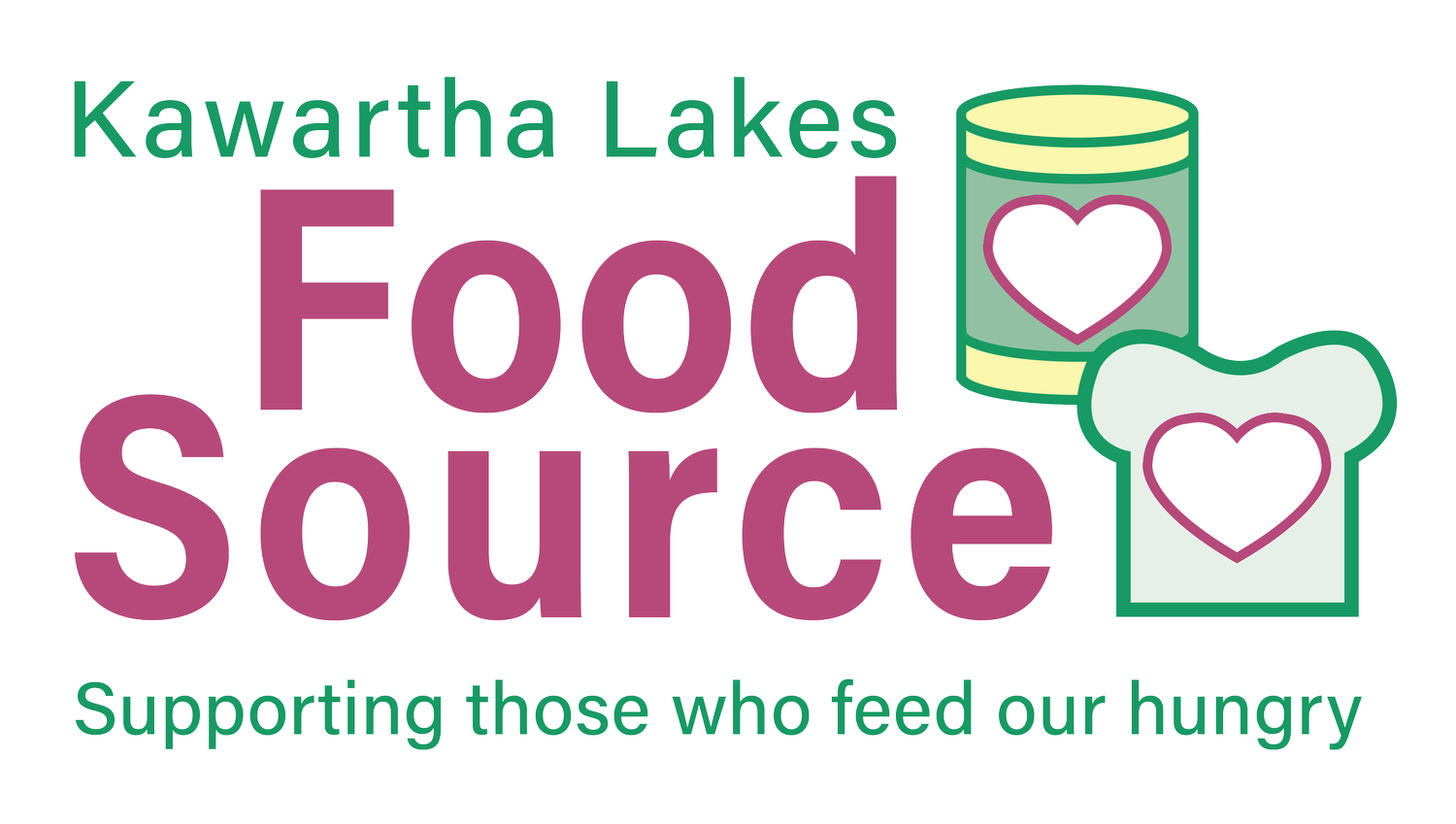Kawartha Lakes Food Source Submits Their Recommendations for the 2023 Ontario Budget
About Kawartha Lakes Food Source:
Kawartha Lakes Food Source is a non-profit distribution centre and community-based organization which supplies food and other household essentials to 35 member organizations and 10 programs that provide support to individuals in need.
Our members include:
21 Schools
8 Food Banks
6 Social Service Agencies
Kawartha Lakes Food Source 2022 member food bank usage statistics [1]:
CKL Population: 75,423 [2]
Total Visits to Member Food Banks: 12,040
Unique Individuals Served: 2,312
Households Served: 1,000
Adults Served: 1,543
Children Served: 769
The most common reasons given for using our member food banks were for employment-related reasons and the high cost of housing, health, and food. Children under 18 years of age made up 50% of the total visits to our member food banks. Only 6% of food bank visitors had postsecondary education.
Recommendation 1: Invest in affordable housing in Ontario
Kawartha Lakes Food Source sees the impact of the affordable housing crisis firsthand. Food banks become a necessity for Ontarians when a monthly income is consumed by the rising high cost of housing. On a meagre budget, heat, hydro, transportation, and food become secondary to housing. Budgets reveal what is valued, and recent Ontario budgets did not consider affordable housing as a priority [3]. More funding needs to be invested in this basic need.
Recommendation 2: Provide adequate financial supports for Ontarians
We implore the Government of Ontario to align social assistance rates and benefits with current costs of living, especially for single income households. Those depending on current OW and ODSP rates live in poverty, significantly below the level needed for health and wellbeing [4]. When Ontarians are unable to earn enough to meet their basic needs, they spend less on food, eat less healthy meals, and are at high risk for chronic diseases and mental health issues [5]. Those accessing our programs and member organizations are living in deep poverty that is inherent with current social assistance rates. Adequate financial support addresses poverty and in turn addresses food insecurity and many other social issues.
Recommendation 3: Invest in education supports to break the cycle of generational poverty in Ontario
94% of those visiting our member food banks do not have postsecondary education. This rate is disproportionate compared with 2016 statistics showing that almost two-thirds of adults in Canada have completed postsecondary education [6]. There is a strong case for education as the path out of poverty. Those with post-secondary training have the lowest unemployment rate and the highest income [7]. We support free postsecondary tuition for those in deep poverty.
Recommendation 4: Commit to Basic Income Guarantee
The changing labour market has increased precarious employment for Ontarians, requiring community support to feed families when workers slip back into poverty between employment opportunities. A basic income guarantee provides stability for those individuals in insecure positions. Poverty costs Ontario between $27.1 - $33 Billion in health and justice system expenses and loss of potential tax revenues [8]. A basic income for all of Ontarians would significantly decrease the costs of poverty.
Additional notes to reflect making Ontario the best place to build a career, a family and a future [9]:
Support those looking for work: Increase affordability and rural availability of early learning and childcare across the province, especially on evenings and weekends. With significant increases in investment, this will expand employment opportunities to primary caregivers, as they currently struggle to find childcare outside of traditional business hours, restricting their work possibilities.
Connect people to places: Transportation is a barrier in rural regions. Those people within the City of Kawartha Lakes who do not have the privileged ability to afford and maintain a vehicle have no capacity to access the services they need or get to a place of employment to work toward affording a car. Increasing funding to rural municipalities allows for expansion of transportation systems into rural communities and subsidization for those unable to afford fare.
Create a more competitive business environment: Increasing funding for housing, social assistance programs, transportation, childcare, and basic income allows struggling Ontarians to participate in the economy, making the business environment more competitive by allowing the maximum amount of participation of our population.
Bring poverty’s voice to the budget table: When the Ontario government actively listens to people with lived experience, they will come to understand whether public investments will be truly capable of effectively changing the financial situation of those in deep poverty.
[1] Data presented is aggregated from our member food banks, as reported in Link2Feed. Link2Feed is a standardized software program used by all members of Food Banks Canada.
[2] Statistics Canada. (Accessed: 2023, February 9) Census Profile, 2016.
[3] Talwar Kapoor, G. (2021, April 7). Successive budgets show affordable housing is clearly not a priority for Ontario. Maytree. https://maytree.com/publications/successive-budgets-show-affordable-housing-is-clearly-not-a-priority-for-ontario/
[4] King, Amanda and Quan, Ashley. (2021) Hunger Report, 2021. Feed Ontario. https://feedontario.ca/research/hunger-report-2021/
[5] Haliburton Kawartha Pine Ridge Health Unit. (2020, January). CKL Food Insecurity [Infographic].
[6] Statistics Canada. (2017, November 29) Canada’s Educational Portrait [Infographic]. https://www150.statcan.gc.ca/n1/pub/11-627-m/11-627-m2017036-eng.htm
[7] Statistics Canada. (2022, January 7) Table 14-10-0020-01, Unemployment rate, participation rate and employment rate by educational attainment, annual.
[8] Feed Ontario. (2019, October). The Cost of Poverty in Ontario, p. 4.
[9] Ontario.ca. (2022, January 14) Ontario Launches New Virtual 2022 Budget Consultations.https://news.ontario.ca/en/release/1001425/ontario-launches-virtual-2022-budget-consultations
